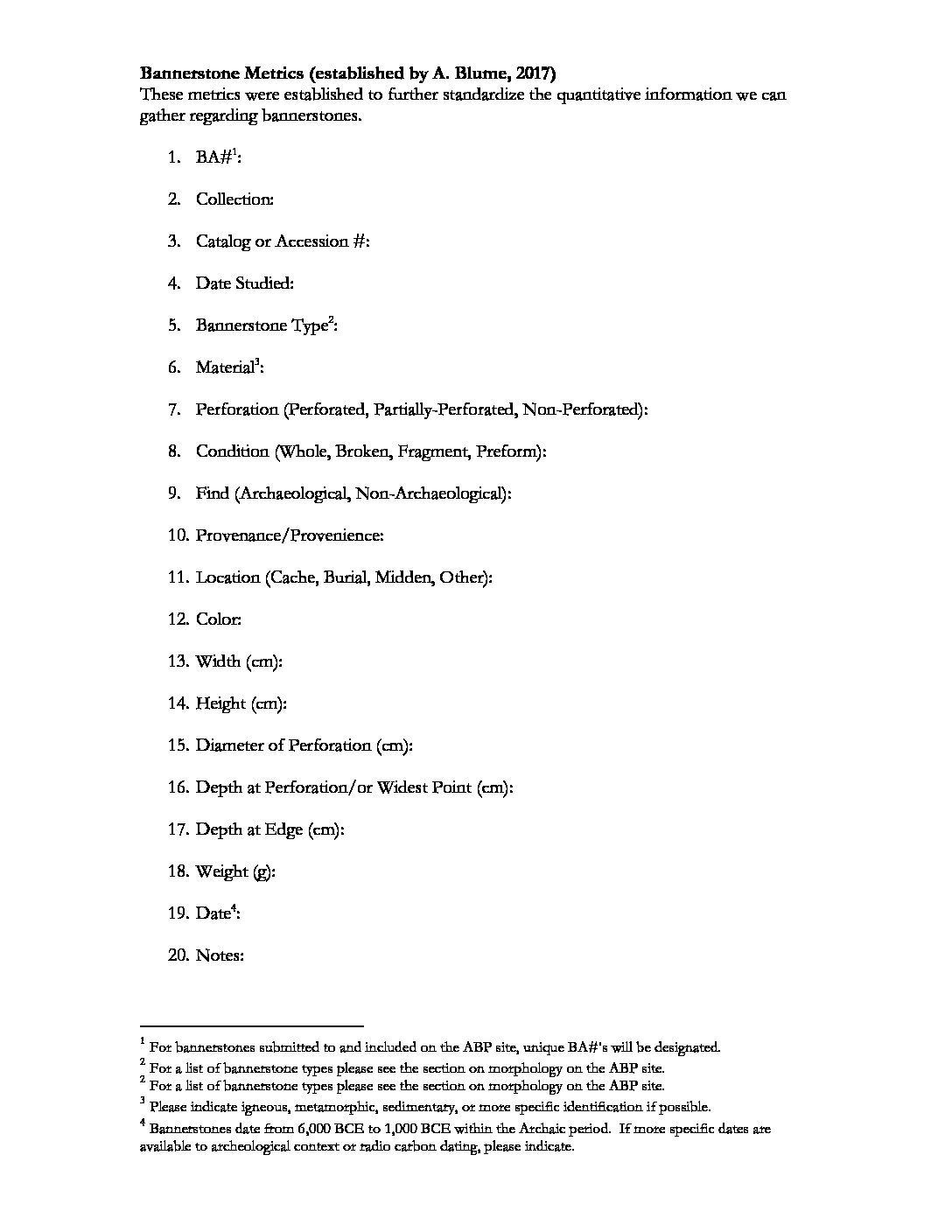Learn About Bannerstones
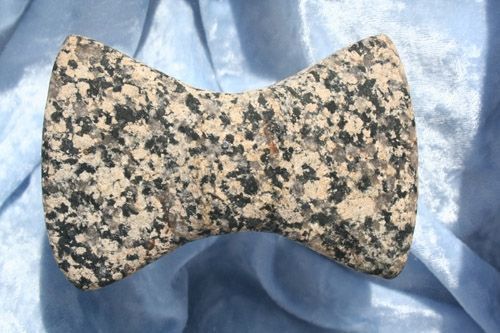
September 15, 2025
The atlatl is an ancient weapon that dates back thousands of years. Used by early humans for hunting and warfare, this tool played a significant role in human history. Today, the atlatl is experiencing a resurgence as people rediscover its effectiveness and unique appeal. In this guide, we will explore the history of the atlatl, its mechanics, and how it is being used in modern times. What is an atlatl and its historical significance? An atlatl is a spear-throwing device that was used by early humans for hunting and warfare. It consists of a handle or shaft with a hook or spur at the end, which holds the spear in place. By using leverage, the atlatl allows for greater force and accuracy when throwing a spear. This tool played a significant role in human history, as it allowed early humans to hunt larger and more dangerous prey, as well as defend themselves against enemies. The atlatl was eventually replaced by the bow and arrow, but its historical significance cannot be overlooked. It represents a crucial development in human technology and the advancement of hunting and warfare strategies. How does an atlatl work and what advantages does it offer? The atlatl works by extending the length of the thrower’s arm, allowing for greater leverage and force when launching a spear. The hook or spur at the end of the atlatl holds the spear in place, providing stability and control during the throw. This added length and stability result in increased accuracy and distance compared to throwing a spear by hand alone. The atlatl also allows for a quicker and more efficient throwing motion, making it easier to target moving prey or enemies. Overall, the atlatl offers significant advantages in terms of range, accuracy, and power, making it a formidable weapon in the hands of skilled users. The revival of the atlatl in modern times. In recent years, there has been a growing interest in ancient weapons and tools, leading to a revival of the atlatl. Archaeologists, historians, and enthusiasts have been studying and experimenting with this forgotten weapon, seeking to understand its capabilities and master its use. Today, there are even atlatl competitions and events where participants can showcase their skills and compete against each other. The revival of the atlatl not only provides a fascinating glimpse into our ancient past but also offers a unique and exciting recreational activity for those interested in history and primitive technology. The atlatl in hunting and sport. The atlatl, an ancient weapon used for hunting and warfare, is now making a comeback in the world of sport. With its long history and unique design, the atlatl offers a challenging and thrilling experience for those who want to test their skills in a traditional and primitive way. In atlatl competitions, participants use replicas of the ancient weapon to throw darts or spears at targets, aiming for accuracy and distance. This sport not only provides a fun and competitive activity but also allows individuals to connect with our ancient ancestors and appreciate their ingenuity and resourcefulness. Whether you’re a history buff or simply looking for a new and exciting hobby, exploring the world of atlatl hunting and sport can be a rewarding and enriching experience.
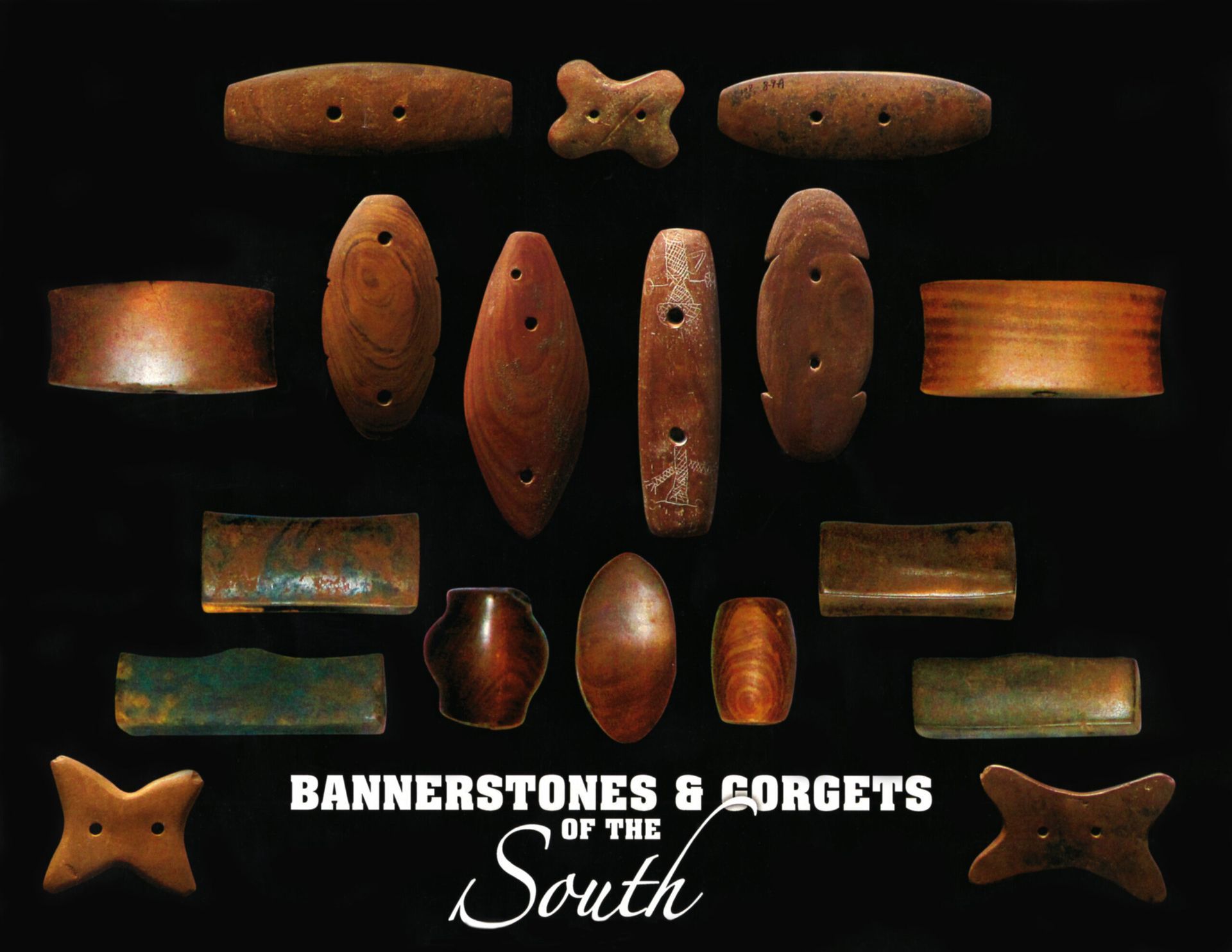
September 15, 2025
What is a bannerstone? A bannerstone is a small stone artifact that has been found at archaeological sites around the world. These artifacts are typically made of stone, such as flint or slate, and are often intricately carved or shaped. The exact purpose of bannerstones is still a subject of debate among archaeologists, as there is limited evidence to suggest their specific function. However, they are believed to have held some significance in ancient cultures, possibly as ceremonial or symbolic objects. The study of bannerstones provides valuable insights into the beliefs and practices of ancient civilizations, and continues to intrigue archaeologists and historians alike. The significance of bannerstones in archaeology. Bannerstones hold great significance in the field of archaeology as they provide valuable insights into the beliefs and practices of ancient civilizations. While the exact purpose of these small stone artifacts is still debated among experts, they are believed to have had ceremonial or symbolic importance. The intricate carvings and shapes of bannerstones suggest that they were not simply utilitarian tools, but rather objects of cultural significance. By studying bannerstones, archaeologists are able to gain a deeper understanding of the ancient cultures that created them and the rituals or ceremonies in which they may have been used. The mystery surrounding bannerstones continues to captivate archaeologists and historians, making them an important area of research in the field of archaeology. Examples of bannerstones from different archaeological sites. Bannerstones have been discovered at various archaeological sites around the world, providing valuable insights into different ancient cultures. One notable example is the Cahokia site in present-day Illinois, USA. Excavations at Cahokia have uncovered numerous bannerstones, suggesting their significance in the religious and ceremonial practices of the Mississippian culture. These bannerstones often feature intricate carvings and unique shapes, indicating their importance in rituals and ceremonies. Another example comes from the ancient Mayan civilization in Mesoamerica. Archaeologists have found bannerstones in Mayan archaeological sites, such as Tikal and Copan. These bannerstones are often made from jade or other precious stones and are adorned with intricate carvings depicting Mayan deities and symbols. They are believed to have been used in religious ceremonies and may have held symbolic importance in Mayan society. In Europe, bannerstones have been discovered at various Neolithic sites, such as Stonehenge in England and Carnac in France. These bannerstones, made from materials like flint or stone, are often found in burial sites, suggesting their association with rituals and beliefs surrounding death and the afterlife. These examples highlight the diverse range of bannerstones found in different archaeological contexts, providing valuable clues about the beliefs and practices of ancient civilizations. By studying these artifacts, archaeologists are able to piece together the puzzle of the past and gain a deeper understanding of the cultural significance of bannerstones. The role of bannerstones in understanding ancient societies. Bannerstones play a crucial role in understanding ancient societies and their cultural practices. These artifacts provide valuable insights into the religious and ceremonial practices of different civilizations. The intricate carvings and unique shapes of bannerstones indicate their importance in rituals and ceremonies. For example, at the Cahokia site in present-day Illinois, bannerstones have been found in abundance, suggesting their significance in the religious and ceremonial practices of the Mississippian culture. Similarly, in Mayan archaeological sites like Tikal and Copan, bannerstones made from precious stones like jade have been discovered, adorned with carvings depicting Mayan deities and symbols. These bannerstones are believed to have played a role in religious ceremonies and held symbolic importance in Mayan society. In Europe, bannerstones found at Neolithic sites like Stonehenge and Carnac are often associated with burial sites, indicating their connection to rituals and beliefs surrounding death and the afterlife. By studying these bannerstones, archaeologists are able to gain a deeper understanding of ancient societies and their cultural practices. These artifacts provide valuable clues about the beliefs, rituals, and symbolism of different civilizations, helping to piece together the puzzle of the past.
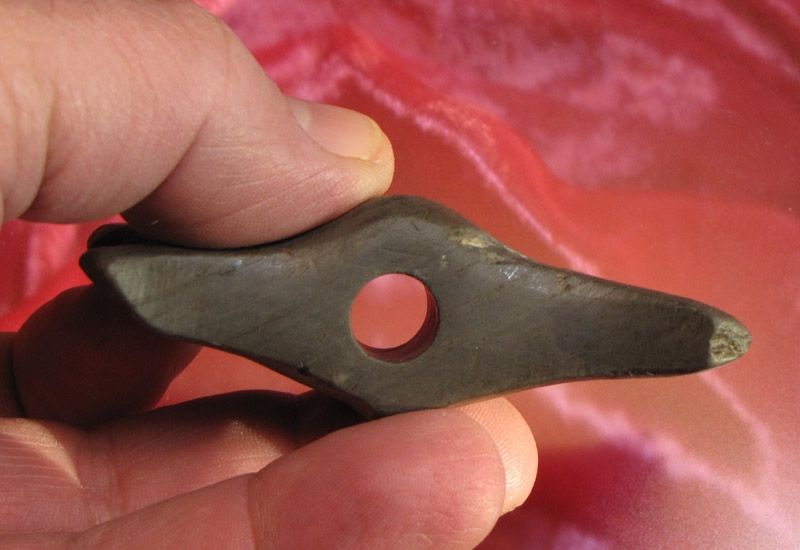
September 15, 2025
For centuries, Native American artifacts have been treasured for their beauty, cultural significance, and historical value. From intricately woven baskets to intricately carved totem poles, these artifacts are a testament to the rich history and traditions of the indigenous peoples of America. However, if you are a collector or dealer of Native American artifacts, you know that selling them can be a tricky business. With so many regulations, laws, and ethical considerations to navigate, it can be difficult to know where to start. That’s where we come in. In this article, we’ll reveal the best-kept secrets of selling Native American artifacts, as shared by our team of expert collectors and dealers. From pricing strategies to legal requirements, we’ll provide you with the insights and advice you need to successfully sell your Native American artifacts and ensure they end up in the right hands. So, whether you’re a seasoned collector or just starting out, read on to discover the secrets of selling Native American artifacts like a pro. The significance of Native American artifacts Native American artifacts are an important part of American history. They are cultural symbols that represent the beliefs, values, and traditions of the indigenous people of America. For many people, collecting Native American artifacts is a way of preserving and celebrating the rich history of these people. Some collectors see it as a way of connecting with the past and learning about the lives of those who came before them. However, it’s important to understand that Native American artifacts are not just objects to be bought and sold. They are an important part of the cultural heritage of Native American communities, and many of them are considered sacred. For this reason, it’s important to approach the buying and selling of Native American artifacts with respect and sensitivity. Legal considerations when selling Native American artifacts When it comes to selling Native American artifacts, there are a number of legal considerations to keep in mind. The first thing to understand is that many Native American artifacts are protected by law. This is because they are considered to be cultural property and are often tied to the identity and history of Native American communities. The Native American Graves Protection and Repatriation Act (NAGPRA) is a federal law that requires institutions that receive federal funding to return Native American human remains, funerary objects, sacred objects, and objects of cultural patrimony to their rightful owners. This means that if you are in possession of an artifact that falls under any of these categories, you may be required to return it to the appropriate Native American tribe or group. Additionally, some states have laws that regulate the buying and selling of Native American artifacts. For example, in Arizona, it is illegal to buy or sell any Native American artifact that was taken from public or private land without a permit. It’s important to research the laws in your state and ensure that you are in compliance before buying or selling any Native American artifacts. Establishing authenticity of Native American artifacts One of the most important aspects of selling Native American artifacts is establishing their authenticity. This is crucial both from a legal perspective and to ensure that you are getting a fair price for your artifact. There are a number of ways to establish the authenticity of a Native American artifact. One of the most important things to look for is provenance. Provenance is the history of an artifact’s ownership and can help to establish its authenticity. If an artifact can be traced back to a specific Native American tribe or group, this can provide strong evidence of its authenticity. Another important factor is the materials used to create the artifact. Many Native American artifacts were made using materials that were specific to certain regions or tribes. For example, Navajo rugs are often made from wool, while Hopi kachina dolls are traditionally made from cottonwood root. Finally, it’s important to work with reputable dealers and collectors who have a track record of dealing in authentic Native American artifacts. These individuals will have the knowledge and expertise to help you establish the authenticity of your artifact and ensure that you get a fair price for it. Pricing your Native American artifacts When it comes to pricing your Native American artifacts, there are a number of factors to consider. The first thing to keep in mind is the rarity of the artifact. The more rare an artifact is, the more valuable it is likely to be. Additionally, the condition of the artifact will also impact its value. Artifacts that are in excellent condition are typically more valuable than those that show signs of wear and tear. Another important factor to consider is the demand for the artifact. If there are many collectors looking for a particular type of artifact, this can drive up the price. On the other hand, if there is little demand for a particular type of artifact, this can make it more difficult to sell and may result in a lower price. It’s also important to do your research and understand the market for Native American artifacts. This will help you to determine a fair price for your artifact and ensure that you are not overpricing or underpricing it. Marketing and advertising your Native American artifacts Once you have established the authenticity and value of your Native American artifact, it’s time to start marketing and advertising it to potential buyers. There are a number of ways to do this, including: – Online marketplaces: There are a number of online marketplaces that specialize in Native American artifacts, such as eBay and Etsy. These platforms allow you to reach a large audience of potential buyers from all over the world. – Auction houses: Auction houses can be a great way to sell high-value Native American artifacts. They have a built-in audience of collectors and often attract high prices. – Native American art shows: There are a number of Native American art shows and events held throughout the year. These events can be a great way to showcase your artifacts and meet potential buyers in person. When marketing and advertising your Native American artifacts, it’s important to provide accurate and detailed descriptions of the items. This will help potential buyers to understand the value and significance of the artifact. The best places to sell your Native American artifacts When it comes to selling your Native American artifacts, there are a number of options to consider. Some of the best places to sell Native American artifacts include: – Online marketplaces: As mentioned earlier, online marketplaces can be a great way to reach a large audience of potential buyers. – Auction houses: Auction houses can be a great option for high-value artifacts, as they often attract serious collectors and can result in high prices. – Native American art galleries: Native American art galleries specialize in selling authentic Native American artifacts and can provide a great platform for selling your items. – Private collectors: Finally, you may want to consider selling your Native American artifacts to private collectors. These individuals may be willing to pay top dollar for rare or unique artifacts. Expert tips for selling Native American artifacts To wrap up, here are some expert tips for selling Native American artifacts: – Do your research: Before buying or selling any Native American artifacts, it’s important to do your research and understand the laws and regulations that apply. – Work with reputable dealers and collectors: When buying or selling Native American artifacts, it’s important to work with individuals who have a track record of dealing in authentic artifacts. – Establish authenticity: Establishing the authenticity of your Native American artifact is crucial both from a legal perspective and to ensure that you get a fair price for it. – Be respectful: Native American artifacts are an important part of the cultural heritage of Native American communities. It’s important to approach the buying and selling of these artifacts with respect and sensitivity. Common mistakes to avoid when selling Native American artifacts Finally, here are some common mistakes to avoid when selling Native American artifacts: – Failing to establish authenticity: Failing to establish the authenticity of your artifact can result in legal issues and may impact the price you are able to get for it. – Overpricing or underpricing: It’s important to do your research and understand the market for Native American artifacts to ensure that you are pricing your items fairly. – Lack of sensitivity: Native American artifacts are an important part of the cultural heritage of Native American communities. It’s important to approach the buying and selling of these artifacts with respect and sensitivity. Conclusion Selling Native American artifacts can be a challenging business, but with the right knowledge and expertise, it can also be a rewarding one. By understanding the legal considerations, establishing the authenticity of your artifacts, and pricing and marketing them effectively, you can ensure that your artifacts end up in the right hands and are appreciated for their beauty, cultural significance, and historical value.
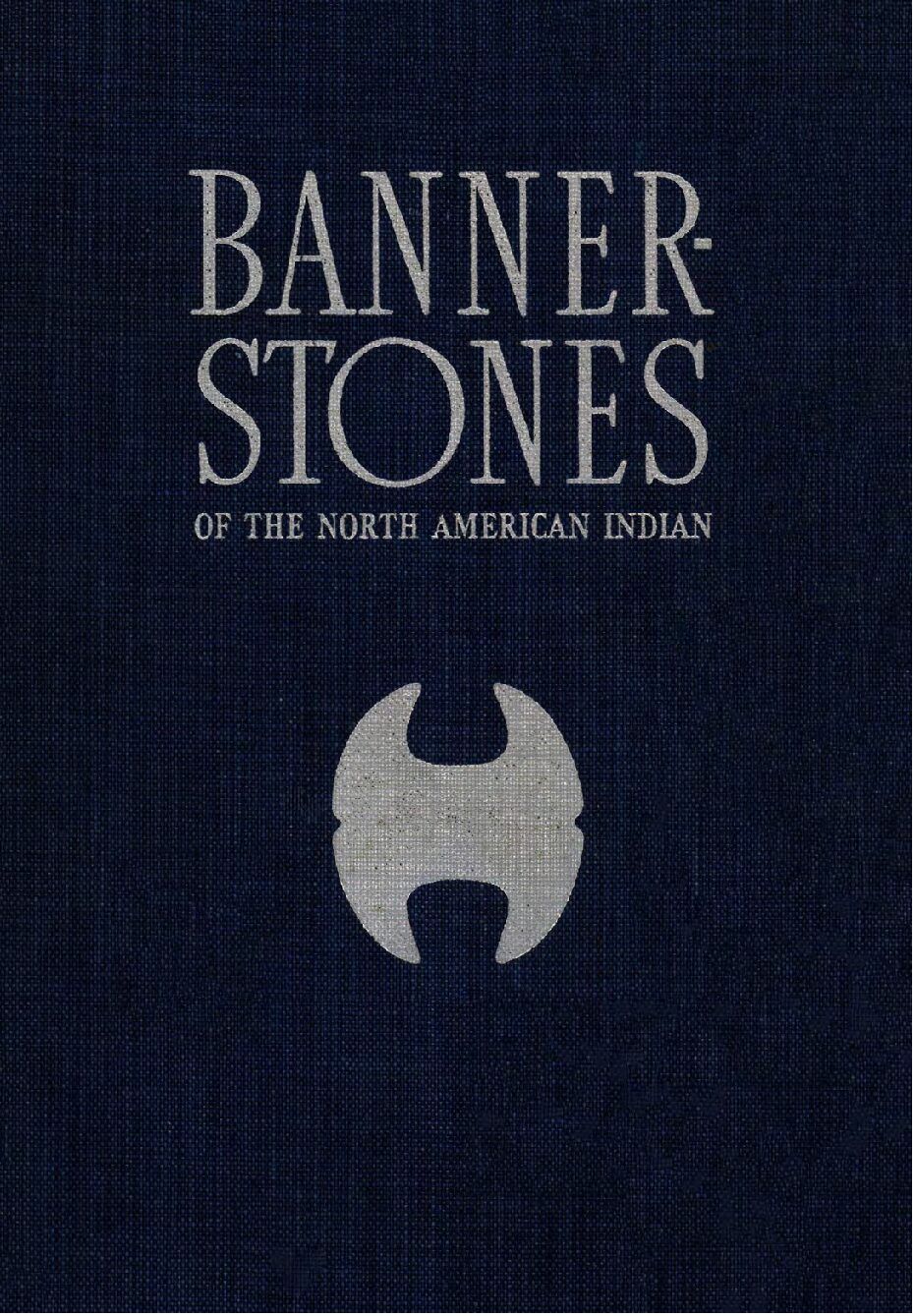
By Dr. Anna Blume
•
September 15, 2025
Used with permission from Dr. Anna Blume Attached below is a downloadable PDF of the entire text of Byron Knoblock’s 1939 Banner-stones of the North American Indian. This 595-page tome, now out of print and difficult to find, was the first rigorous, comprehensive study of bannerstones . In it, Knoblock includes hundreds of images of bannerstones in public and private collations. Also of great importance to the study of bannerstones is his careful morphology and hypotheses about where types originated and developed. It must be noted that many of Knoblock’s general comments and ideas about the makers of these stones are deeply problematic, and have been rightfully contested by subsequent scholars. Still, this text remains a crucial resource for the study of bannerstones .
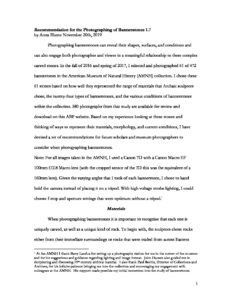
By Dr. Anna Blume
•
September 15, 2025
Photographing bannerstones can reveal their shapes, surfaces, and conditions and can also engage both photographer and viewer in a meaningful relationship to these complex carved stones. In the fall of 2016 and spring of 2017, I selected and photographed 61 of 472 bannestones in the American Museum of Natural History (AMNH) collection. I chose these 61 stones based on how well they represented the range of materials that Archaic sculptors chose, the twenty-four types of bannerstones, and the various conditions of bannerstones within the collection. 580 photographs from that study are available for review and download on this ABP website. Based on my experience looking at these stones and thinking of ways to represent their materials, morphology, and current conditions, I have devised a set of recommendations for future scholars and museum photographers to consider when photographing bannerstones. Note: For all images taken in the AMNH, I used a Canon 7D with a Canon Macro EF 100mm f/2.8 Macro lens (with the cropped sensor of the 7D this was the equivalent of a 160mm lens). Given the varying angles that I took of each bannerstone, I chose to hand hold the camera instead of placing it on a tripod. With high voltage strobe lighting, I could choose f-stop and aperture settings that were optimum without a tripod.

By Dr. Anna Blume
•
September 15, 2025
What is Bannerstone Typology? Article and photos provided by Dr. Anna Blume, https://bannerstone.fitnyc.edu/typology The Archaic Bannerstone Project (ABP) distinguishes 24 bannerstone types based on terms established by Byron Knoblock in his 1939 text Banner-stones of the North American Indian . Below, bannerstones can be browsed by these types and sub-types. As more collections are photographed and added to this ABP site we hope to include examples of all 24 types. Anomalous1 Ball0 Ball, Fluted2 Bottle1 Bottle, Single-Faced0 Butterfly4 Butterfly, Double-Notched9 Butterfly, Quartz3 Butterfly, Single-Notched4 Crescent7 Crescent (miniature)1 Crescent, Double2 Crescent, Notched0 Double Bitted Axe0 Double Edged3 Geniculate3 Hinge0 Hourglass2 Humped0 Humped, Concave0 Lunate0 Lunate, Knobbed5 Ovate2 Ovate, Northern0 Ovate, Notched1 Ovate, Southern13 Panel0 Pick4 Pick, Curved4 Pick, Single-Pronged0 Pick, Straight0 Rectangular1 Rectangular Barreled2 Reel1 Saddleface0 Saddleface, Hooked0 Saddleface, Horned1 Shield4 Shuttle0 Triangular4 Tube, Oval2 Tube, Round0 Tube, Square0 Tube, Triangular0 Wisconsin Wing7
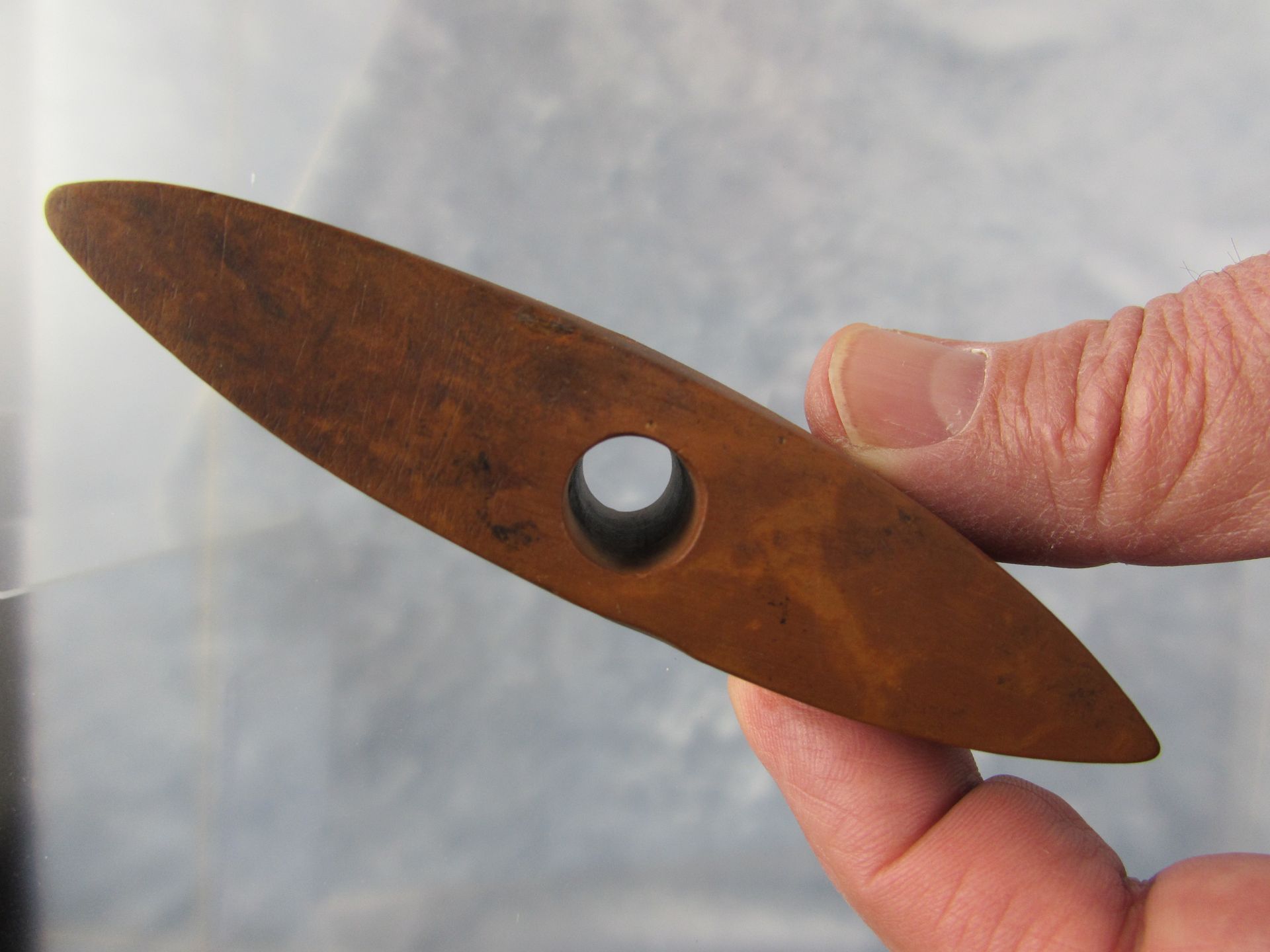
September 15, 2025
What are bannerstones? Bannerstones are small, usually flat, stone artifacts that were created by ancient cultures. They are typically carved into unique shapes and often feature intricate designs. The exact purpose of bannerstones is still debated among archaeologists, but they are believed to have had ceremonial or symbolic significance. They were often attached to spears or other weapons, and their presence in burial sites suggests that they may have held spiritual or ritualistic importance. The study of bannerstones provides valuable insights into the beliefs and practices of ancient civilizations. The origins and history of bannerstones. The origins of bannerstones can be traced back to ancient cultures, with the earliest known examples dating back thousands of years. They were primarily found in North America, particularly in regions inhabited by Native American tribes. The exact techniques used to create bannerstones are still not fully understood, but it is believed that they were carved using stone tools and abrasive materials. Bannerstones were not just decorative objects; they held great cultural and historical significance. They were often associated with hunting and warfare, as they were commonly attached to spears or other weapons. The unique shapes and designs of bannerstones suggest that they may have also had ceremonial or symbolic purposes. The study of bannerstones has provided valuable insights into the beliefs and practices of ancient civilizations. They have been found in burial sites, indicating that they may have been used in funerary rituals or as offerings to the deceased. The presence of bannerstones in these contexts suggests that they held spiritual or ritualistic importance. Overall, bannerstones are fascinating artifacts that offer a glimpse into the rich history and cultural practices of ancient civilizations. Their intricate designs and symbolic significance make them a valuable area of study for archaeologists and historians alike. The various uses of bannerstones. Bannerstones served a variety of purposes in ancient cultures. One of their main uses was as a weight or counterbalance on spears or atlatls (spear-throwing devices). The addition of a bannerstone to a weapon would have increased its accuracy and range. This would have been particularly important for hunting, as well as for warfare. In addition to their practical use, bannerstones also had symbolic and ceremonial significance. The unique shapes and designs of bannerstones suggest that they may have been used in rituals or as symbols of status or power. They have been found in burial sites, indicating that they may have been used in funerary rituals or as offerings to the deceased. The study of bannerstones has provided valuable insights into the cultural practices and beliefs of ancient civilizations. They offer a tangible connection to the past and help us understand the importance of hunting, warfare, and spirituality in these societies. Today, bannerstones are highly prized artifacts and are often displayed in museums or private collections. They continue to fascinate archaeologists, historians, and enthusiasts alike, as they provide a window into the lives and traditions of our ancestors. The cultural significance of bannerstones. Bannerstones hold great cultural significance in ancient civilizations . Their unique shapes and designs suggest that they were not only practical tools but also symbols of status and power. They were used in rituals and ceremonies, and their presence in burial sites indicates their importance in funerary practices. The study of bannerstones has allowed us to gain valuable insights into the cultural practices and beliefs of these ancient societies. Today, these artifacts are highly valued and continue to captivate the interest of archaeologists, historians, and enthusiasts, serving as a tangible link to our past. How bannerstones have influenced art and archaeology. The study of bannerstones has had a significant impact on the fields of art and archaeology. These artifacts have provided valuable insights into the artistic skills and techniques of ancient civilizations. The intricate designs and craftsmanship of bannerstones showcase the creativity and attention to detail of these ancient cultures. Additionally, the presence of bannerstones in burial sites has shed light on the religious and funerary practices of these societies. Archaeologists have been able to piece together the beliefs and rituals surrounding death and the afterlife through the examination of these artifacts. The study of bannerstones continues to contribute to our understanding of ancient civilizations and their cultural practices, making them an important area of research in the field of archaeology.
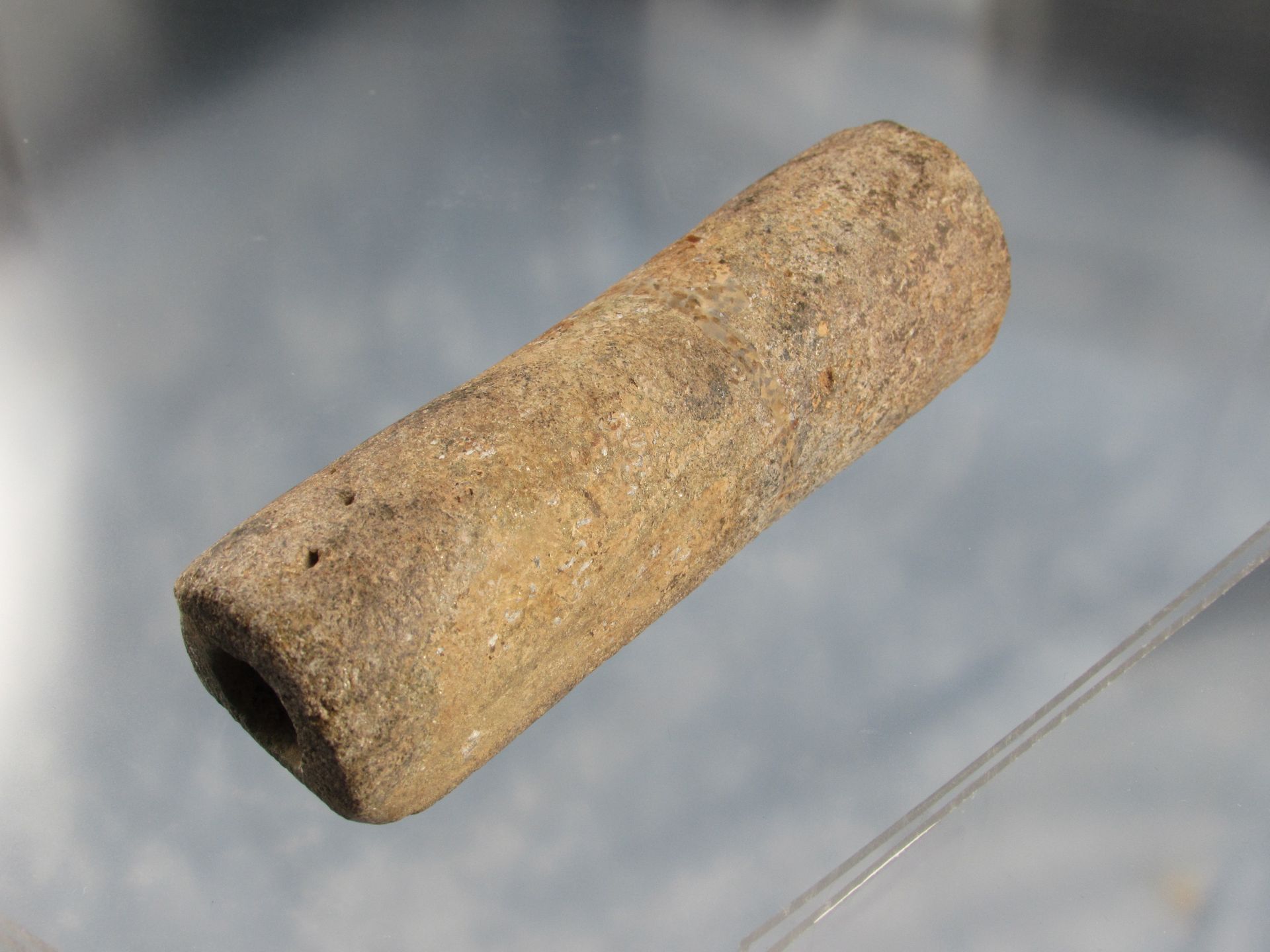
By Dr. Richard Michael Gramly
•
September 15, 2025
Bannerstones exist both in art and anthropology. David L. Lutz, who has both a collector’s sensitivity and formal training in anthropology, knows this fact. Other longtime students of the subject also appreciate the fact and so, too, will careful readers of The Archaic Bannerstone. Although Lutz acknowledges a debt to earlier researchers such as Knoblock (1939), Webb (his many writings), and Kwas (1981), years of systematic inquiries and travel to document collections have earned him the right to speculate about what bannerstones meant to the ancient American societies who made and used them. Dave’s ideas command our attention. In the space of 525 pages he presents thousands of superb photographs representing at least as many artifacts, which are the basis of his arguments. Lutz believes that bannerstones were not tools, but actual emblems of societal membership. In his opinion they were tangible manifestations of persons’ kinship or membership in clans. They may also have had economic value to clansmen, who conducted long-distance trade that brought shell from the Gulf of Mexico to the South (pp. 247, 431, and 510). The areas of distribution (p. 93) or exchange networks we assume, were larger than mere tribal territories. Bannerstones, as clan emblems, also endured for a much longer time than individual tribes or “nations” might be expected to persist. Chronology, or the longevity and succession of the many forms of bannerstone through the centuries, is one of Dave Lutz’s primary concerns. His book has as many facts about dating as any one researcher might be expected to gather in a lifetime, and more than any reader might hope to assimilate during several sittings! Dave pays particular attention to co-occurrences of bannerstones and other artifact types useful for dating — such as projectile points. It is to the author’s lasting credit that he has crafted a work that presents so many critical facts relative to this topic. Bannerstones have long been regarded as art — witness their places in books like Hothem’s Ancient Art of Ohio (1994), Brose et al.’s Ancient Art of the American Woodlands (1985), and Douglas and D’Harnoncourt’s Indian Art of the United States (1941) — to name a few. Dave Lutz is also aware of the strong visual impact that finely crafted bannerstones of choice raw materials have. He has illustrated many examples in full color within this volume. But to him even the use of certain stones has chronological value; he speculates as well that some raw materials were culturally, if not socially, expressive (for example, pp. 94 and 464). Scattered throughout The Archaic Bannerstone are brief sections offering anecdotal and previously published information about famous discoveries, such as the Godar site (p. 321), and Dave’s own answers to often-asked questions, such as (p. 427) why were some bannerstones left undrilled when they were completed in every other way? His answers have the ring of credibility tempered in the fire of long familiarity. A book as impressive as Dave’s leaves one thirsting for more, and should it ever be reprinted, as researchers are sure to demand one day, both an Index and a Glossary should be added. His use of terminology assumes a reader’s familiarity with Knoblock’s Bannerstones of the North American Indian (1939). Although I have carefully leafed through this classic work, I never felt justified in paying the considerable price in order to own it. Other readers may be in the same position — therefore, the need for a glossary. Dave’s book deserves to stand all on its own, owing nothing, but perhaps inspiration itself, to earlier works. Being a “married-in”, adoptive New Englander, who is familiar with the rich record of Archaic sites — both on the islands and estuaries of sea-girt “downeast” as well as along major waterways (like the Connecticut and Androscoggin) of the Interior — I would hope that a future expanded ver¬sion of The Archaic Bannerstone would picture some of the wonderfully delicate, impressive large bannerstones of this region. Many have exact provenience, and, yes, have been absolutely and relatively dated! My real concern about The Archaic Bannerstone is that it will not be read by all the academic archaeologists who would stand to benefit from it. Truly, today certain fields of knowledge are better understood by astute North American artifact collectors and amateur scientists than they are by professionals with PhDs. This much I will admit myself. But Dave Lutz’s unique perspective on bannerstone-using Archaic groups cannot, and will not, be ignored for long by the audience who needs it most. There are scholars, who know a good thing when they read it, to bridge the gap. Thank you, Dave. North Andover, Massachusetts December, 2001 The author of The Archaic Bannerstone is shown in his relic room admiring one of the Hooked bannerstones from the Rockport site cache. “Three Atlatl Cache”, Rockport site bannerstone cache found by the Lutz family on April 20, 1977. These banners were found in a feature on the Rockport site, Spencer County, Indiana. All three were “ceremonially killed”. Two of these bannerstones are of the rare Hooked style, while the third is an Hourglass type. (David Lutz Collection, Newburgh, Indiana)

September 15, 2025
Hardstone banners from upper left: horned with shaft flute, 2.8″, Illinois. green quartz horned 2.75″ Southern Illinois. granite horned 3.25″, Mercer Co., OH. Wisconsin winged 4″, St. Clair Co., IL. ferruginous quartz hourglass 2.4″, Holmes Co., OH. conglomerate granite shuttle 3.5″ Slate banners from the upper left: black glacial slate double-notched butterfly 7″, Michigan. Red claystone double-edged 4.2″, Madison Co. TN. reel 4.75″, Greene Co. IN; double-notched slate butterfly 5.5″, Dubois Co. IN. knobbed crescent 7.75″, Preble Co. OH; clipped wing 3.2″ Ohio, one of 4 known to exist.

